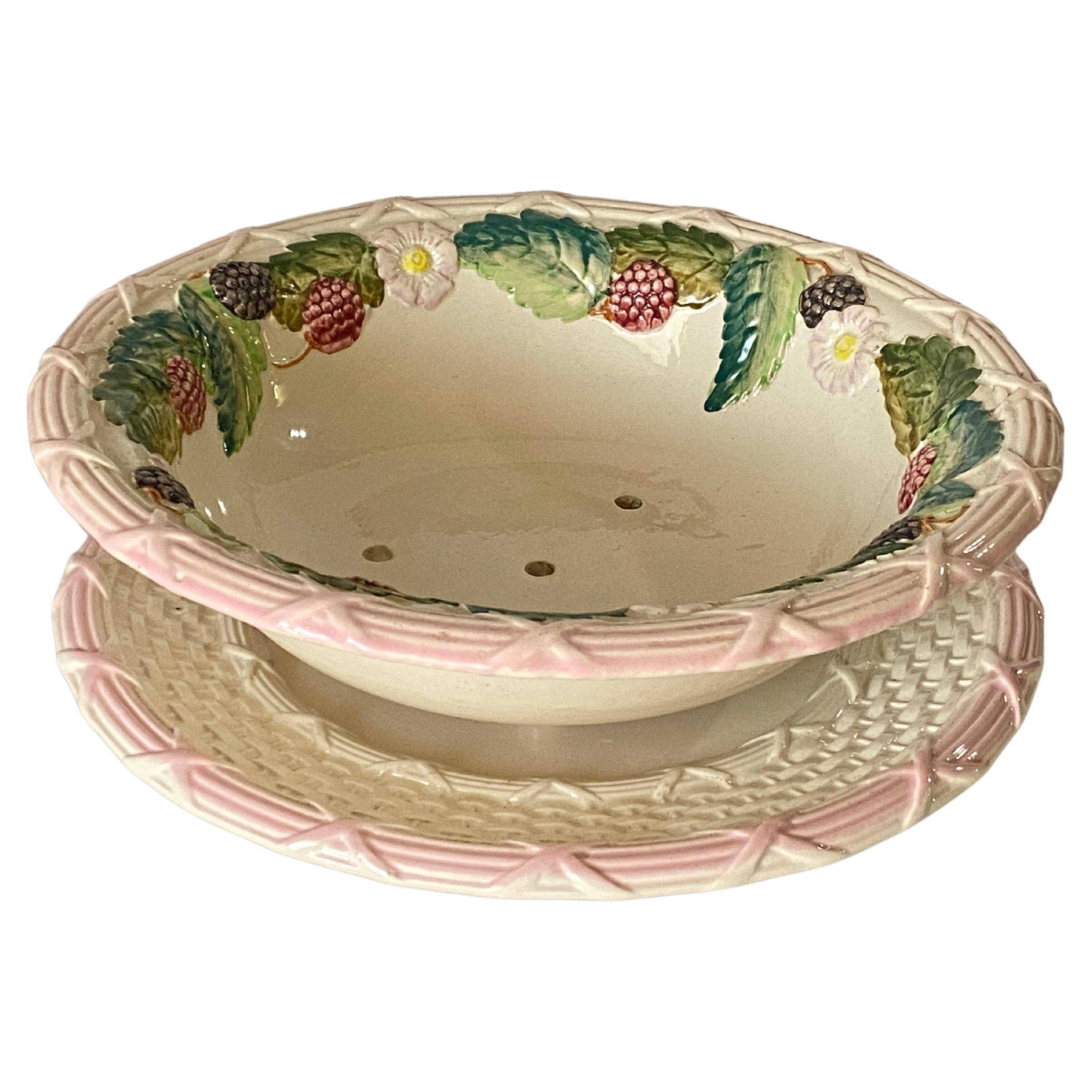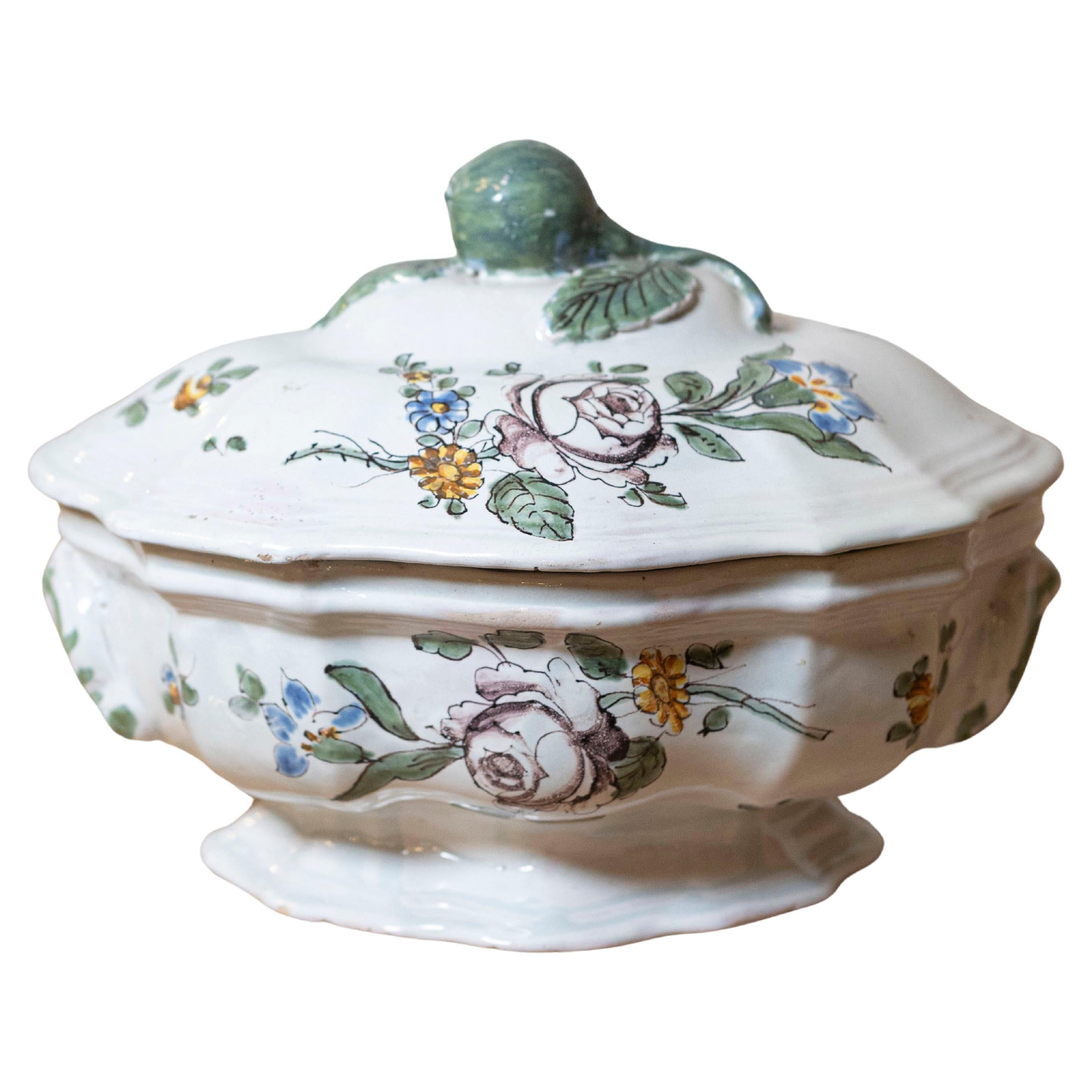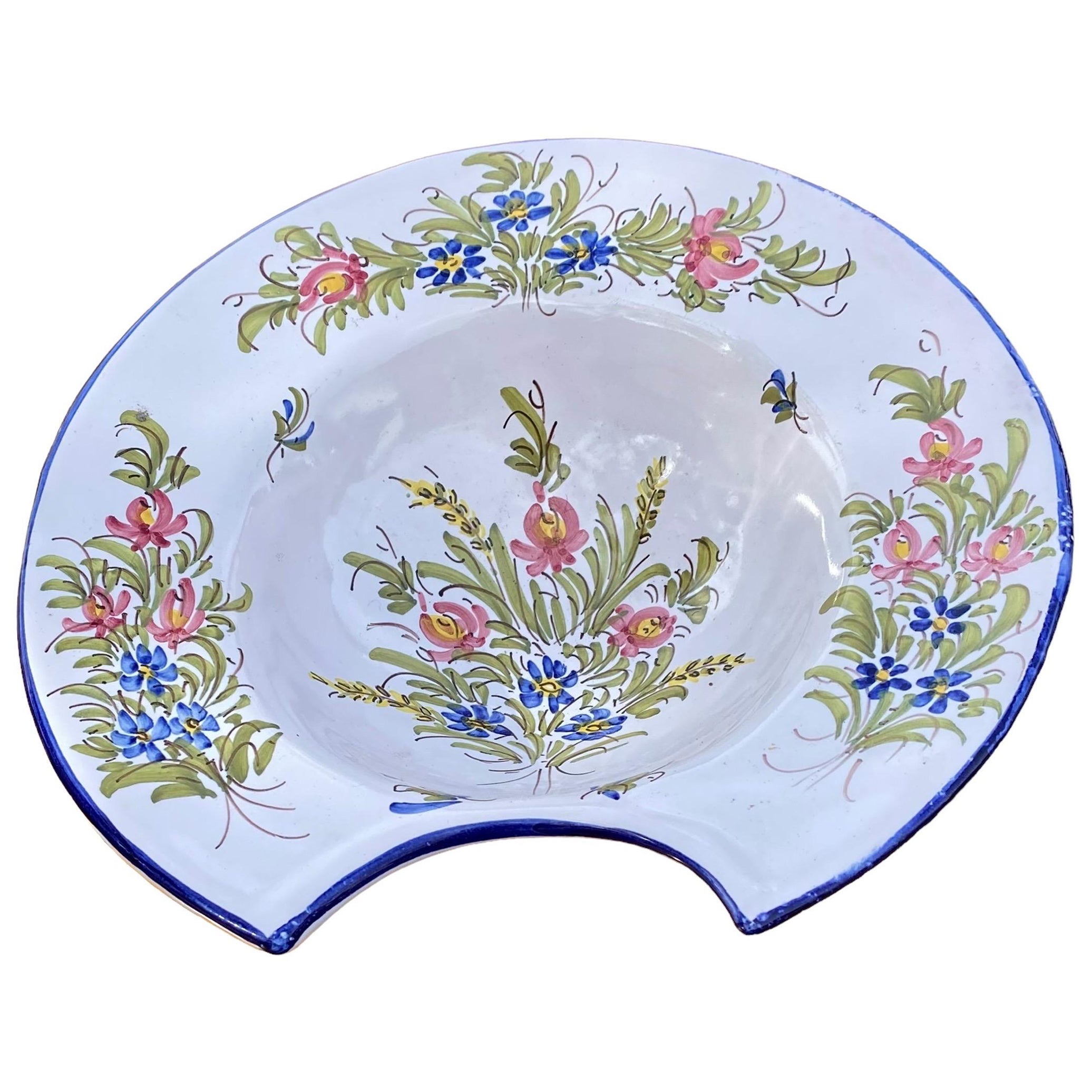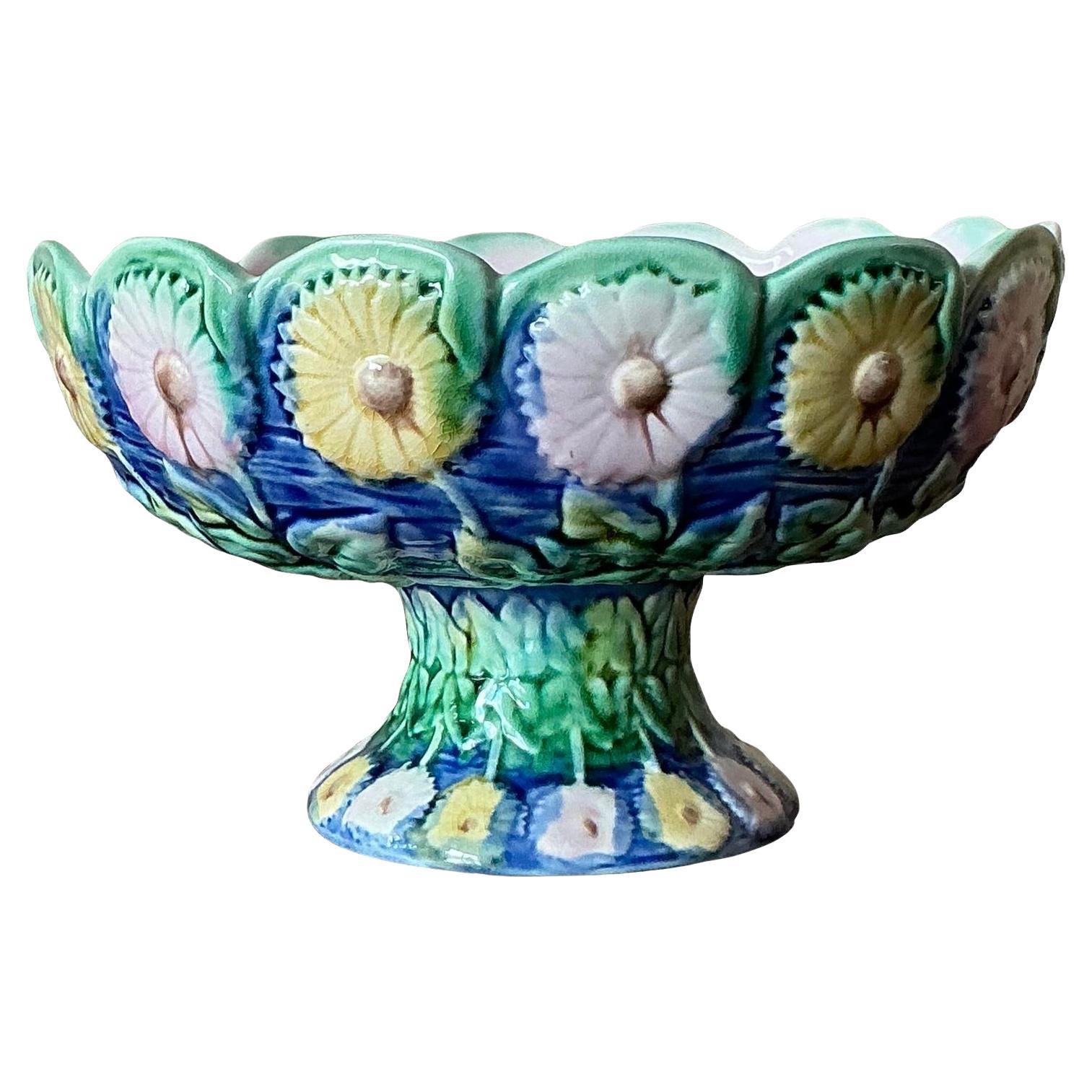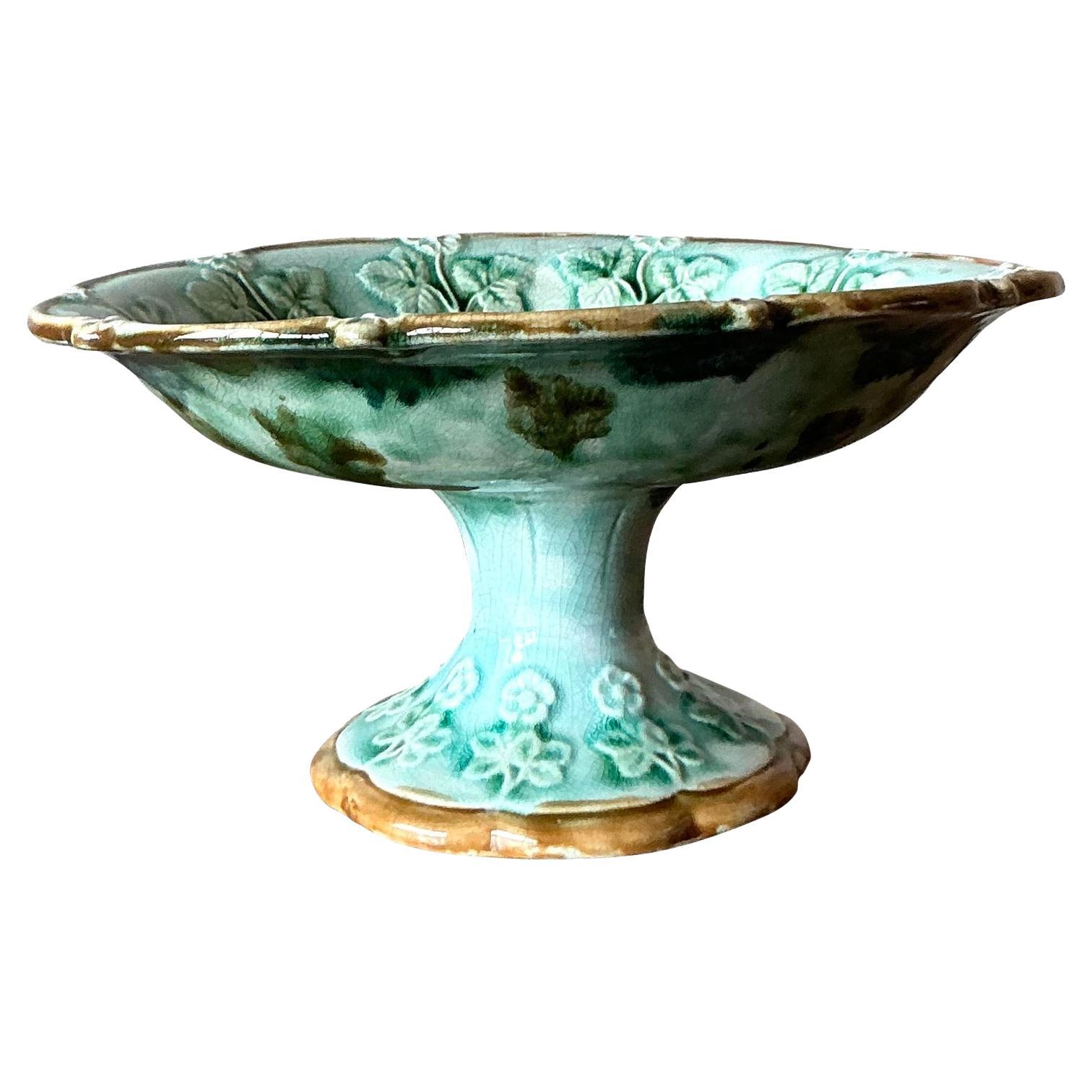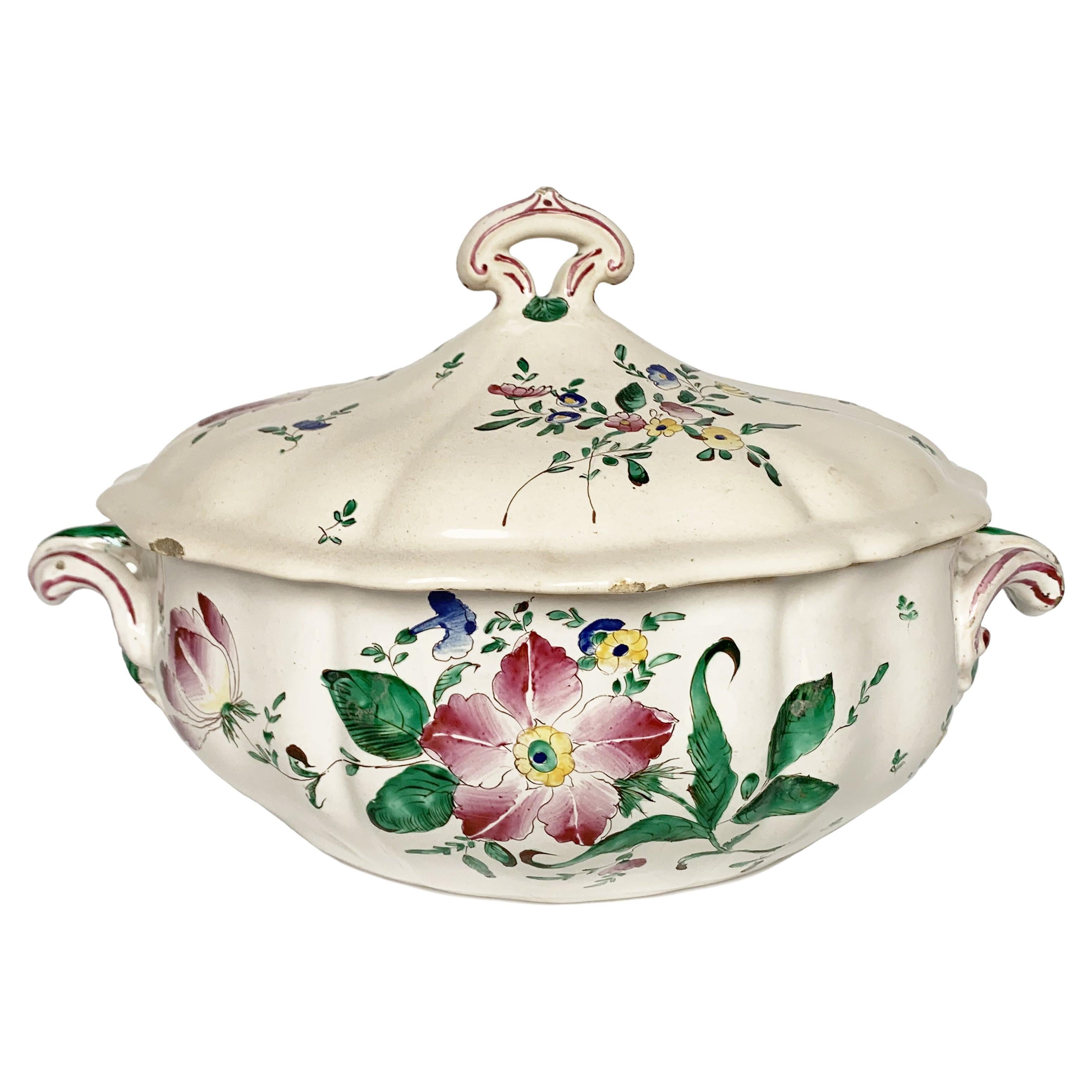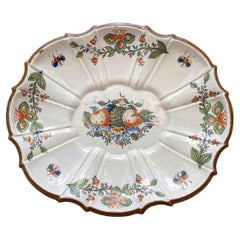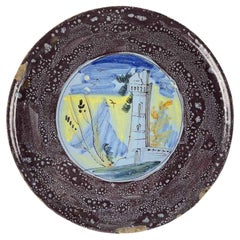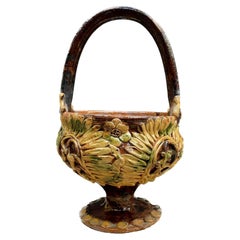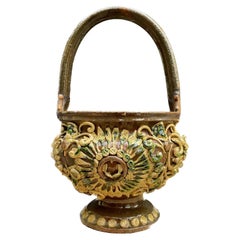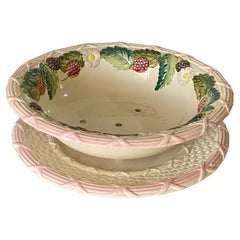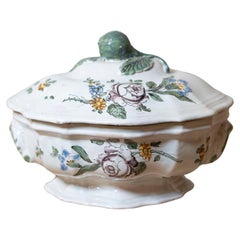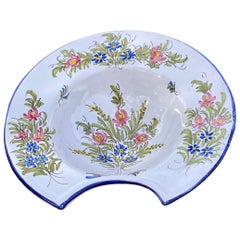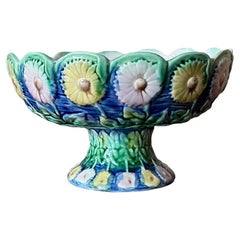Items Similar to 18th Century Italian Majolica Faience Centerpiece Large Lodi Circular Bowl
Want more images or videos?
Request additional images or videos from the seller
1 of 12
18th Century Italian Majolica Faience Centerpiece Large Lodi Circular Bowl
$1,791.54
£1,332.13
€1,500
CA$2,516.30
A$2,770.26
CHF 1,415.89
MX$33,063.84
NOK 18,027.27
SEK 16,869.51
DKK 11,428.21
About the Item
18th century Italian collectible antique painted majolica bowl, a large basin-shaped centerpiece, with vertical ribs, decorated with polychrome flowers. Small chips, felure and minor losses as per images details. Wear consistent with age and use.
Unmarked, this maiolica bowl is of Italian origin, The type of decoration confirms Italian manufacture of Lodi, a city near Milan, in Lombardy region and dates back to mid-18th century.
This artwork is shipped from Italy. Under existing legislation, any artwork in Italy created over 70 years ago requires a governative license for export called Belle Arti. The shipping may require additional 3-4 handling weeks to require and get the license according to the final destination of the artwork.
- Dimensions:Height: 5.12 in (13 cm)Diameter: 11.82 in (30 cm)
- Style:Rococo (In the Style Of)
- Materials and Techniques:
- Place of Origin:
- Period:
- Date of Manufacture:1780
- Condition:Repaired: Some chips, felure and old restorations consistent with age and use. Wear consistent with age and use. Minor losses.
- Seller Location:Milano, IT
- Reference Number:Seller: 26261stDibs: LU2160324183322
About the Seller
5.0
Gold Seller
Premium sellers maintaining a 4.3+ rating and 24-hour response times
Established in 1990
1stDibs seller since 2016
187 sales on 1stDibs
Typical response time: 2 hours
Associations
International Confederation of Art and Antique Dealers' Associations
- ShippingRetrieving quote...Shipping from: Milano, Italy
- Return Policy
Authenticity Guarantee
In the unlikely event there’s an issue with an item’s authenticity, contact us within 1 year for a full refund. DetailsMoney-Back Guarantee
If your item is not as described, is damaged in transit, or does not arrive, contact us within 7 days for a full refund. Details24-Hour Cancellation
You have a 24-hour grace period in which to reconsider your purchase, with no questions asked.Vetted Professional Sellers
Our world-class sellers must adhere to strict standards for service and quality, maintaining the integrity of our listings.Price-Match Guarantee
If you find that a seller listed the same item for a lower price elsewhere, we’ll match it.Trusted Global Delivery
Our best-in-class carrier network provides specialized shipping options worldwide, including custom delivery.More From This Seller
View AllLarge Dish In Italian Majolica Manufacture Antonibon Fruit Decoration 1750
By Giovanni Battista Antonibon
Located in Milano, MI
Large Maiolica Dish Of The Antonibon Manufacture With Fruit Decoration Circa 1750 in excellent condition of oval shape with mixtilinear edges, bears in the center a fruit decoration ...
Category
Antique Mid-18th Century Italian Baroque Centerpieces
Materials
Maiolica
18th Century Italian Berrettino Majolica Faience Riser
Located in Milano, MI
An Italian maiolica berrettino-ground riser from 18th century, central Italy, probably Faenza origin. In the central part of the riser a ruined tower is painted within a mountain lan...
Category
Antique Mid-18th Century Italian Rococo Decorative Dishes and Vide-Poche
Materials
Maiolica
19th Century Italian Terracotta Handled Warmer Vase with Flowers from Tuscany
Located in Milano, MI
From Tuscany a ceramic basket realized with a circular vase with polychrome geometric decorations on the body and a relief decoration handmade by applied flowers and scrolls as well as on the handle.
A Mid-19th Century Italian ceramic warmer, a circular basket...
Category
Antique Mid-19th Century Italian Arts and Crafts Decorative Baskets
Materials
Ceramic, Terracotta
Mid-19th Century Italian Tuscan Warmer Basket
Located in Milano, MI
From Tuscany a ceramic basket realized with a circular vase with polychrome geometric decorations on the body and a relief decoration handmade by applied flowers and scrolls as well as on the handle.
A Mid-19th Century Italian ceramic warmer, a circular basket...
Category
Antique Mid-19th Century Italian Arts and Crafts Decorative Baskets
Materials
Ceramic, Terracotta
20th Century Italian Tuscan Vase Basket with Fishes Shells
Located in Milano, MI
Decorated and perforated ceramic basket realized with a circular vase with polychrome geometric decorations on the body and a relief decoration on the edge handmade by multiple shells and small fishes, as well as on the handle.
Two ornamental shell-shaped spouts on the larger edge.
In good age related condition, with signs of use, small breaks of some fish tails and minor chips on the edge of the vase. Handmade and hand painted in Italy, Tuscan origin, mid-20th century.
A perfect Italian artwork...
Category
Mid-20th Century Italian Arts and Crafts Decorative Baskets
Materials
Ceramic
Paesaggio Dipinto Su Maiolica Italiana 1750 Circa Placca Ovale Da Parete Veneta
Located in Milano, MI
Formella Da Parete In Maiolica policroma Italiana, di area Veneta Dipinta Con Paesaggio 1750 Circa, di forma ovale con cornice, una cimasa formata da fiori e racemi sormontati da un...
Category
Antique Mid-18th Century Italian Baroque Decorative Art
Materials
Maiolica
You May Also Like
Vintage French Majolica Fruit Bowl Table Centerpiece
Located in Auribeau sur Siagne, FR
This bowl is in Majolica. It is a fruit bowl, made in France in the 1960.
Red and green color.
Signed FG.
Category
Vintage 1960s French Mid-Century Modern Decorative Bowls
Materials
Ceramic
$238 Sale Price
20% Off
French 1750s Faience Oval Shaped Soup Tureen from Bordeaux with Floral Decor
Located in Atlanta, GA
A French faïence mid-18th century oval-shaped soup tureen from Bordeaux with floral decor. Created in Southwestern France during the reign of King Louis XV, this soup tureen features...
Category
Antique Mid-18th Century French Louis XV Soup Tureens
Materials
Faience
Antique French Faience Barber Bowl
Located in New Orleans, LA
An iconic piece of French history Is this antique French Faience plat a barbe (Barber's Bowl) created by bolosunes masters in Samadet, a commune...
Category
Early 20th Century French French Provincial Decorative Bowls
Materials
Faience
$167 Sale Price
39% Off
Vintage Regency Smith and Hill Footed Majolica Bowl
Located in West Palm Beach, FL
A vibrant and exquisitely detailed piece of Victorian ceramic art, this antique footed compote is a stunning example of the work of English pottery, Smith & Hill. The exterior is mas...
Category
Early 20th Century British Regency Decorative Bowls
Materials
Pottery
Vintage Regency Majolica Footed Bowl
Located in West Palm Beach, FL
A truly lovely example of Victorian-era ceramic artistry, this antique majolica footed compote is brimming with naturalistic charm. The piece features a beautifully scalloped dish, m...
Category
Antique Late 19th Century British Art Nouveau Decorative Bowls
Materials
Pottery
Ancient Maiolica Tureen Ferretti Manufacture, Lodi, Circa 1770 - 1780
By Antonio Ferretti
Located in Milano, IT
Maiolica tureen
Antonio Ferretti Manufacture
Lodi, Circa 1770 - 1780
Maiolica polychrome decorated “a piccolo fuoco” (third fire).
It measures 9.06 in in height x 13.39 in x 9.84 i...
Category
Antique 1770s Italian Rococo Soup Tureens
Materials
Maiolica
More Ways To Browse
Italian Majolica
Antique Italian Majolica
Italian Maiolica
Antique Italian Faience
18th Century Ship
Large Italian Centerpiece Bowl
Italian Majolica Bowl
Italian Majolica Centerpiece
18th Century Majolica
Antique Italian Bowl
Large Majolica Bowls
Antique Mortar Pestle
Large Murano Glass Centerpiece Bowl
David Marshall Brass
Enamel Bowl Mid Century
Murano Clear Glass Bowl
Murano Dish Mid Century
Murano Glass Bowls White
